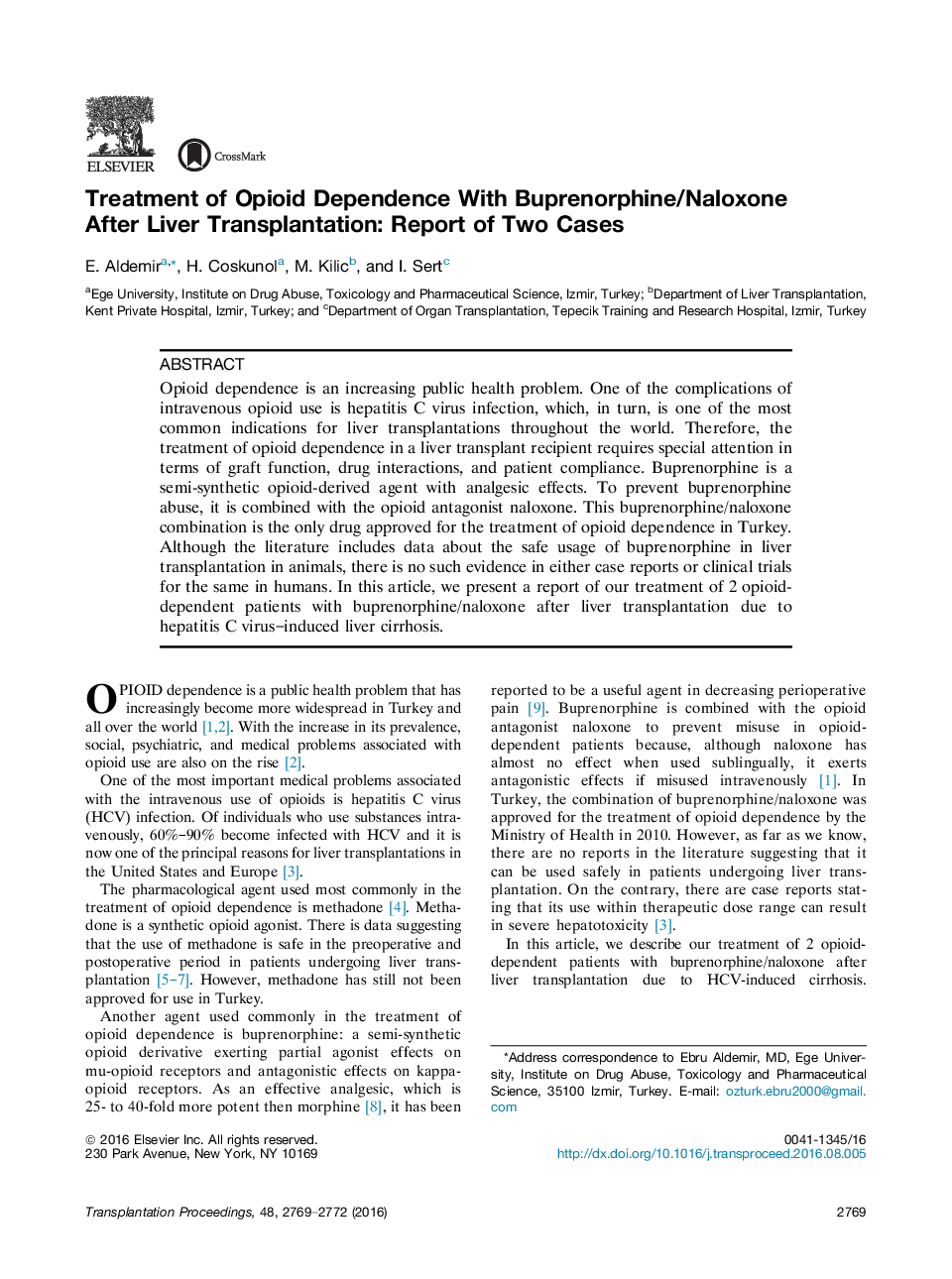| Article ID | Journal | Published Year | Pages | File Type |
|---|---|---|---|---|
| 5729220 | Transplantation Proceedings | 2016 | 4 Pages |
â¢Opioid dependence is an increasing public health problem.â¢HCV cirrhosis is a complication due to intravenous opioid use.â¢Hepatitis C cirrhosis is one of the frequent indications of liver transplantation.â¢Treatment of opioid dependence after liver transplantation is complicated.â¢Buprenorphine/naloxone may be a safe treatment option after liver transplantation.
Opioid dependence is an increasing public health problem. One of the complications of intravenous opioid use is hepatitis C virus infection, which, in turn, is one of the most common indications for liver transplantations throughout the world. Therefore, the treatment of opioid dependence in a liver transplant recipient requires special attention in terms of graft function, drug interactions, and patient compliance. Buprenorphine is a semi-synthetic opioid-derived agent with analgesic effects. To prevent buprenorphine abuse, it is combined with the opioid antagonist naloxone. This buprenorphine/naloxone combination is the only drug approved for the treatment of opioid dependence in Turkey. Although the literature includes data about the safe usage of buprenorphine in liver transplantation in animals, there is no such evidence in either case reports or clinical trials for the same in humans. In this article, we present a report of our treatment of 2 opioid-dependent patients with buprenorphine/naloxone after liver transplantation due to hepatitis C virus-induced liver cirrhosis.
